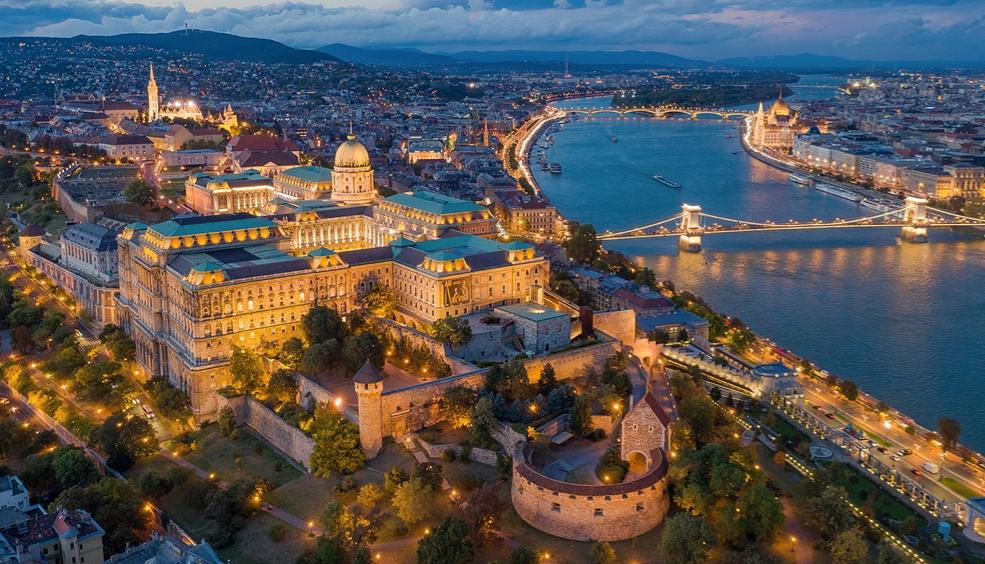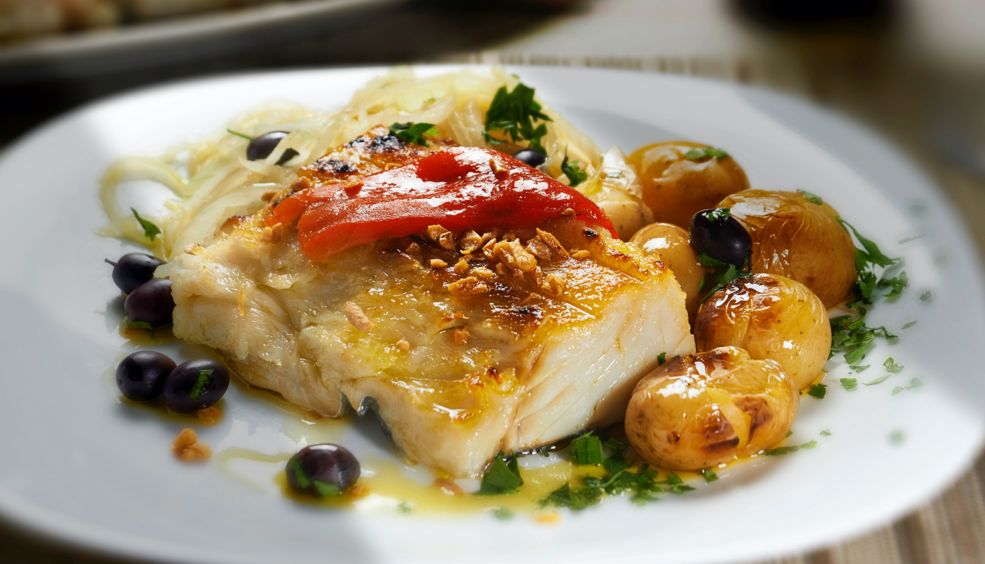6 Reasons To Escape To Madeira
The Atlantic Ocean is blessed with a group of islands – Madeira – whose main draw is their natural beauty, with a stark contrast between the leafy green vegetation and the deep blue of the Atlantic waters. Not for nothing has it acted as a place of refuge, rest and inspiration over the last few centuries, seeing the passage of such figures as Napoleon Bonaparte, the Empress Sissi, Emperor Charles I of Austria, the writer George Bernard Shaw and Winston Churchill, among others. You could be the next traveller to become captivated by these isles. Here are the main reasons it is worth flying to Madeira:
1. Good Climate All Year Around
The geographical location of these islands and their mountain relief have endowed them with a tropical oceanic climate, featuring pleasant temperatures all year around, ranging from 17°C in winter to 25°C in summer. This means that any time of year is suitable for visiting and enjoying the archipelago.
2. Funchal, the Capital
The capital and one of the largest cities in Madeira is Funchal, which lies in the south of the archipelago. Standout landmarks in the city’s priceless historic centre include the 16th-century Sé Cathedral – noteworthy for its Mudéjar-style, wood-panelled ceiling – and the Igreja do Colégio collegiate church, its interior studded with gold panelling and tiles.
One of the inevitable rituals for sightseers when they come to the city – assuming they are bold enough and don’t suffer from vertigo – is to go up in the cable-car that leads to the lofty suburb of Monte. The hill affords spectacular views of the bay and it is worth visiting the local Monte Palace Tropical Garden and Leite Monteiro Park. The return trip down the hillside can be negotiated on an unusual form of transport – a kind of wicker toboggan driven by two men dressed in white called carreiros who steer the cart down the slope.
3. Unique Fauna and Flora
One of the highlights of the island is the presence of indigenous animal and plant species. A must-see is the World Heritage Laurisilva Forest. Another must-visit are the Desertas Islands, a marine nature reserve which boasts indigenous shellfish and sea birds like Cory's shearwater and the Madeiran storm-petrel. Animal species also include the monk seal, indigenous to the archipelago.
4. Porto Santo Beach
Curiously, the island terrain limits the number of natural beaches to the island of Porto Santo, which has 9 kilometres of fine, golden sand and crystal-clear water. The beach has rightly been considered one of the most beautiful in Europe.
5. Cuisine
Of the typical Madeiran dishes, we can recommend the swordfish, preferably combined with banana, in addition to caldeirada (a fish soup), bife de atum e milho frito (tuna fish with fried corn) and espetada (charcoal-roasted beef on a bay leaf skewer). For dessert, we can heartily recommend a typical sweet known as bolo de mel (a honey cake with Madeira honey).
6. Madeira Wine
Ever since the sugar cane plantations went into decline in the 17th century, having been overtaken by the sugar farming in Brazil, grape-growing and viniculture came into their own and still play an important part in Madeira’s economy. Notable local grape varieties are the Bual – which is similar to Port – Verdelho, Sercial and Malmsey, the most popular of all.
Ready to discover this lost paradise in the middle of the Atlantic Ocean? Check out your Vueling here.
Text by Los Viajes de ISABELYLUIS
Images by David Stanley, Greg_Men, penjelly, Krzysztof Belczyński, Hannes Grobe
more info
The Jet Set’s Best Kept Secret
Granted, the seaboard of the Emerald Coast is a haven for anyone seeking idyllic beaches and crystal-clear turquoise waters. And one might be forgiven for forgetting to visit the town of Olbia. However, we are determined to sing the praises of this charming locality in the north of Sardinia, and of the Emerald Coast and environs. Touring here during the summer months is obviously a surefire bet, but we intend to persuade you to make an off-season visit, to discover the area’s true DNA, over and above any touristic conditioning.
Olbia
On the opposite side to its industrial precinct lies an attractive town with a historical centre dotted with shops, wine bars and café-packed squares. But, above all, the authenticity of Olbia stands in stark contrast to the more touristy areas on the north and south sides of the island.
Located on the Emerald Coast, Olbia is clearly evocative of a classical Sardinian picture postcard – white sandy beaches, wind-sculpted rocks projecting into the blue sea and luxury tourism galore, with yachts moored off the many coves along the coastline. However, inland Gallura seems to be in the antipodes, with its vineyards, pretty villages, mountains and mysterious nuragas – the most prolific megalithic construction on the island dating back prior to 1,000 BC. The northern Gallura coastline is rugged, its waters an exclusive sanctuary for dolphins, divers and windsurfers delighting in the marine reserve of La Maddalena. The Maddalena National Park includes an archipelago made up of seven islands, known as “the Seven Sisters”: La Maddalena – the largest of them – Caprera, Santo Stefano, Spargi, Budelli, Santa Maria and Razzoli. All the islands are granitic, set close to one another and surrounded by shallow water. This, added to the chromatic fluctuations of the sea and the marvel of nature here make for an incomparable setting well worth discovering. The town still has the appearance of a former fishing village and its sights include the town hall, the parish church of Santa Maria Maddalena, as well as restaurants and shops offering all kinds of products.
Emerald Coast
The Emerald Coast, which stretches for 55 km from Porto Rotondo to the Gulf of Arzachena, is the island’s most sought after tourist destination, a flashy preserve of luxury hotels, hidden beaches and pleasure harbours accessible to a chosen few. Ever since the Aga Khan acquired the coast for a sou in the 1960s, it has attracted the jet set from all over the world and, of course, a swarm of paparazzi, too. But, despite such trifles, the fact remains it is a well nigh perfect setting, with granite mountains bathed in emerald-green waters and a string of coves, each of them different yet perfect in its own right.
Its capital is Porto Cervo, an unusual seaside resort in that it resembles a mock-up, with Moorish-style buildings and squeaky-clean streets. Jaunty, rakish and worldly, this sophisticated spot is a veritable paradise. From June to September it is the hub of high-class partying, with tanned beauties posing in the Piazzetta and oil millionaires ambling about the big name stores. But, the coast is very quiet for the rest of the year and it is unlikely you will bump into anybody, apart from the odd bunch of locals.
A westbound excursion would be in order. You will come to Baia Sardinia, an expanse of exquisite sand, while in the south, near the Hotel Cala di Volpe, lie the spectacular beaches of Capriccioli and Spiaggia di Liscia Ruia. Hard by the Hotel Romazzino, the beach of Spiaggia del Principe fans out in the shape of a crescent moon, its white sand bathed by the deep blue sea. But, let’s press on with our dream. And, not all the region’s treasures are sited along the coast.
Not to be missed in the interior is the village of San Pantaleo. Further inland, the town of Arzachena reveals a number of interesting archaeological sites, notably Nuraghe di Albucciu, alongside the main road to Olbia, and Coddu Ecchju, one of the island’s most important tombe dei giganti – funerary monuments made up of communal burials dating from the Nuragic period (second millennium BC).
Eager to discover the marvels of Olbia and the Emerald Coast during the quieter months? Check out our flights here.
Text by ISABELYLUIS Comunicación
Images by Gabriel Garcia Marengo
more info4 ROMANTIC DESTINATIONS TO SWEEP YOUR PARTNER OFF THEIR FEET
Whether to celebrate Valentine's Day or an anniversary, or simply to give your partner an amazing gift, here are some ideas for a romantic getaway.
more infoGASTRONOMY IN PORTUGAL: A USEFUL LITTLE GUIDE ON THE SECRETS OF COD
Cod is a major institution in Portugal. Across the length and breadth of the country, you'll find it on every menu every day. Which is why we've prepared a useful little guide to help you learn more about this fish, including its history as well as the cultural and gastronomic aspects. And make no mistake… you'll be licking your fingers!
more info




